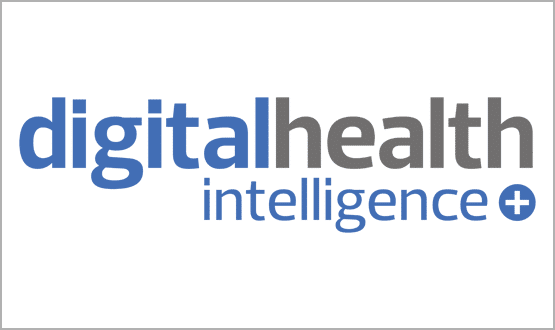CfH business plan indicates delivery delay
- 6 September 2005
NHS Connecting for Health has issued its first annual business plan listing the agency’s achievements and setting out a programme of work that remains heavy on infrastructure and light on the rich clinical functionality the service is looking for to help transform services.
The plan is published almost three years after the establishment of the National Programme for IT, and the appointment of Richard Granger as the health service’s IT director general.
Key achievements identified by CfH include beginning the first phases of the spine roll out of Electronic Transfer of Prescriptions and Choose and Book; the first GP systems to link to the spine; solid progress on rolling out the New National Network (N3) and the first sites with Picture Archiving and Communications (PACS).
The document also stresses CfH’s historic achievements in terms of mobilising a programme team and running the 2003-2004 procurement. In his foreword the director-general appears to shave a year off the programme’s age – it was launched in October 2002 – stating the programme is two just years old.
Further projects are highlighted as having been delivered over the past three years, some that have been added since NPfIT’s launch. NHS Contact, the NHS email system; the Quality Monitoring and Assessment System (QMAS); and products and services that transferred from the old NHS Information Authority – such as the National Library for Health, NHS Strategic Tracing Service and NHS Numbers for Babies – all feature prominently in the report.
There is scant mention, however, of the core integrated electronic patient record solutions that the programme, through its four local service providers (LSPs), is meant to by now be delivering in local health communities across the English NHS. These systems form the critical local component of the NHS Care Records Service.
Integrated electronic patient record systems – Lorenzo from iSOFT, Carecast from IDX and now Millennium from Cerner – the key clinical solutions delivered by the programme are not directly referred to in the list of targets for 2005-2006 given in the business plan. Originally due to have begun implementation by late 2004, their delivery now appears to have been further delayed. In April CfH acknowledged that the programme was running behind schedule across England.
It is these locally delivered detailed clinical solutions, providing the rich local component of the NHS Care Records Service, that are recognised to offer the greatest benefits to patient care. Without them any national records system is unlikely to provide much clinical utility.
In the section on targets for NHS Care Records Service the business plan states the aim is "To deploy a Spine release by the end of December 2005 to enable significant progress to be made against targets for the Electronic Transfer of Prescriptions and LSP deployments."
Talking about what will be delivered in 2005-2006 the CfH business plan states the clusters will "install a new patient administration system (PAS) in 50 hospitals and community units, as an upgrade to an existing clinical administration system in preparation for clinical records".
This means that up to 50 locations – and one NHS trust may include several locations – will receive some form of upgrade to their existing PAS system. No mention is made of when they will be upgraded to the rich local clinical record systems.
In January 2005 CfH’s implementation plan said that new hospital administration and clinical systems would be deployed at 54 NHS trusts by the end of March 2005, with a further 311 trusts receiving systems by the end of 2005-2006.
The report goes on to say that a further 160 NHS trusts will ”benefit” from new services "such as support for child health, assessments (supporting the single assessment process), improved access to information and knowledge on best practice and support for ambulance services". Again the wording is ambiguous – "benefit" does not necessarily mean systems will be implemented or even fully deployed.
Another area where deadlines appear to have softened is Picture Archiving and Communication Systems (PACS). The target had been 80% coverage of PACS by March 2006 and 100% by March 2007, but the document says that by March 2006 "we will achieve partial deployment of PACS and develop firm plans for completing the bulk of deployments by March 2007."
Targets also look to have slipped on Choose and Book, originally destined to be fully implemented by December 2005, and ETP. On ETP the business plan offers only a heavily qualified target. "Subject to the completion of deployment agreements with system suppliers and the completion of deployment activities by PCTs, we will ensure that 50% of the National Prescription Service is in place by the end of 2005."
CfH goes on to say that "An estimated 350,000 NHS clinicians and their support staff will be affected by the systems installed and the changes to working arrangements to improve patient care". No basis for the statement is provided, though a large portion of the figure may be made up from staff having access to email through NHS Contact.
Virtually no financials are given by CfH. Describing expenditure in 2005-2006 the document simply states that CfH will spend £1,208 million in capital and £925 million in revenue – a total of £2,133 million.
Turning to ICT expenditure across the NHS as a whole the document says that the £6.2 billion of central contract expenditure, "will be complemented by local baseline expenditure – already £1bn a year and likely to rise in line with Wanless’ recommendations. This will be available within the NHS to support local implementation of the National Programme."
The statement indicates that CfH is working on the assumption that all local NHS IT expenditure can be directed to support the implementation of the National Programme, despite much local IT spend being tied up in providing user support, basic business and back office systems outside the scope of NPfIT and servicing specialist clinical systems.




